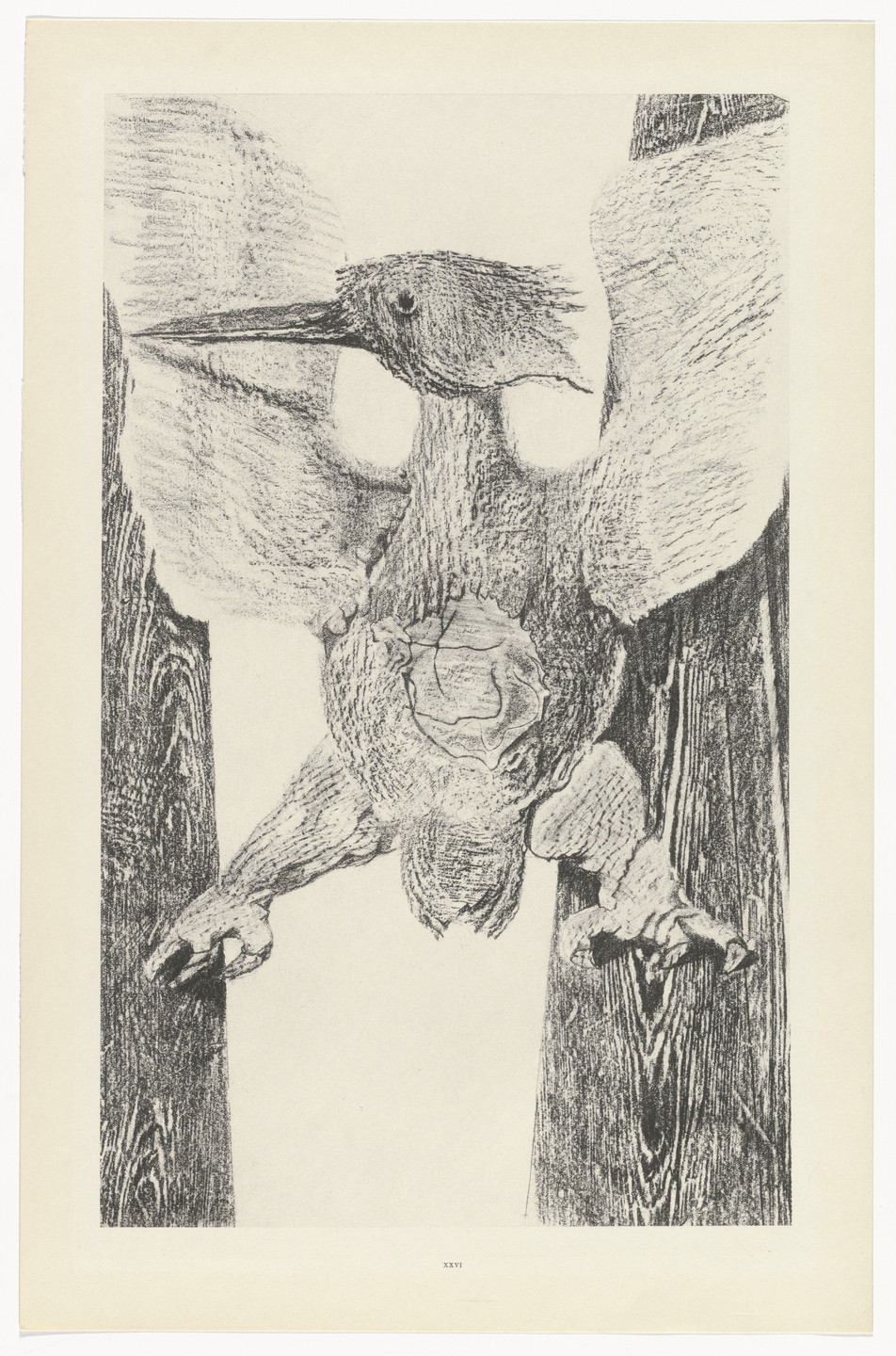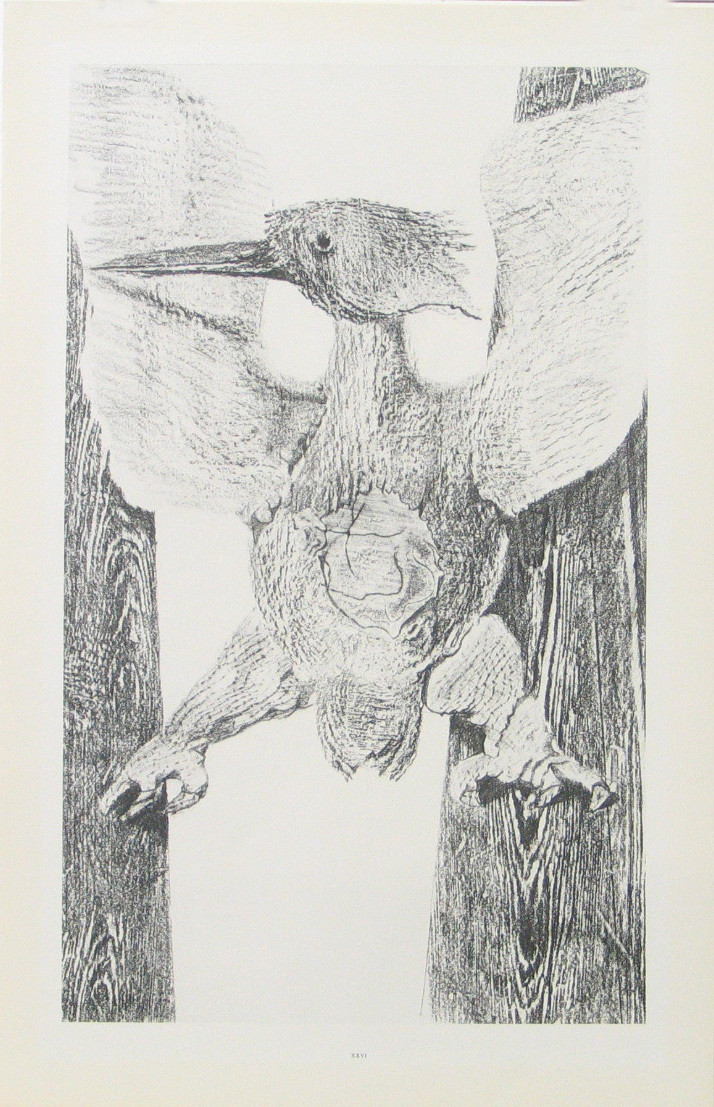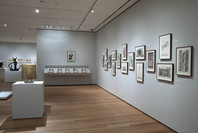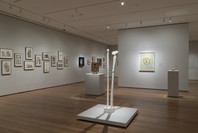A Dada and Surrealist painter, sculptor, and printmaker, Ernst experimented with the technique of frottage, or rubbing, in an attempt to probe the unconscious. He created these images by rubbing various materials—wood, crumpled paper, crusts of bread—with a pencil or crayon through a sheet of paper, then allowing the resulting textures to inspire him to invent strange landscapes, objects, and animals.
Gallery label from Wunderkammer: A Century of Curiosities, July 30–November 10, 2008.
Ernst created these images by placing paper atop various materials—wood floorboards, lengths of twine, leaves, wire mesh, crumpled paper, crusts of bread—and rubbing the surface with a pencil or crayon. Inspired by the resulting textures, he added details to transform them into fantastical landscapes, objects, and creatures. Ernst called his process frottage (French for “rubbing”) and claimed it as a form of Surrealist automatism, whereby an artist attempts to let the unconscious guide his hand in the creation of an image.
Gallery label from Max Ernst: Beyond Painting, September 23, 2017-January 1, 2018.



